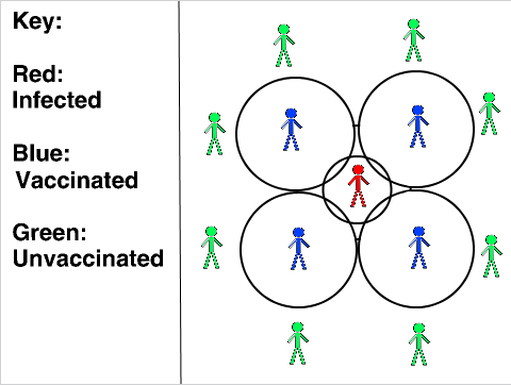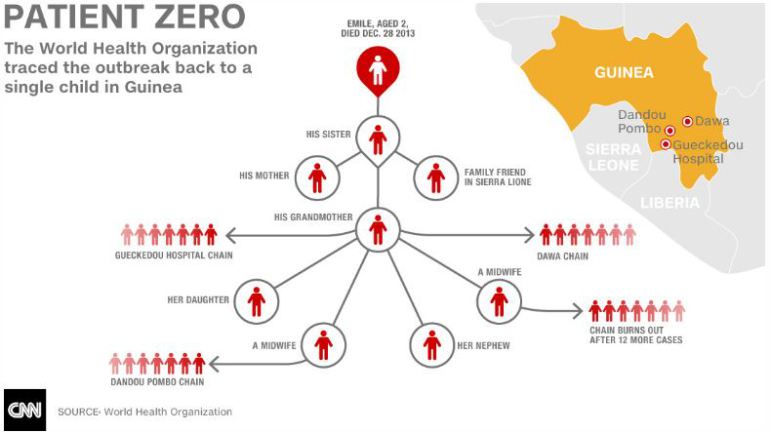(Roy, 2010)
Ring VaccinationDr. Foege stated, "In many ways the strategy that stopped the virus was a logical extension of the firefighting principle I was taught back in the summers of 1956 and 1957. By removing the fuel one step ahead of the virus, we had built a fire line around it." Foege created ring vaccination, a system that contained and controlled smallpox outbreaks. The concept is based on the fact that smallpox relies on human-to-human transmission. Vaccinating the people most likely to contract smallpox from the patient, like a mother or friend, breaks the chain of transmission, ultimately eradicating smallpox. Ring vaccination worked much faster than herd immunity or mass vaccination, which required eighty percent of the population to be vaccinated. With ring vaccination, Foege stopped smallpox by vaccinating less than fifty percent. Dr. Foege's ring vaccination saved money and resources such as the vaccine supply. This concept's creation was a turning point in the Smallpox Eradication Program.
|
This training video describes how ring vaccination was used in the field.
(Smallpox Movies: Training and Education Compilation Disc 1, 1972)
Ring Vaccination TodayRing vaccination was not only used for smallpox, but in 2014, was used against another dreaded disease--ebola. Ebola, like smallpox, thrives only within a host. The disease must infect another person to survive. So if the chain of transmission is broken, then the disease will die.
|

